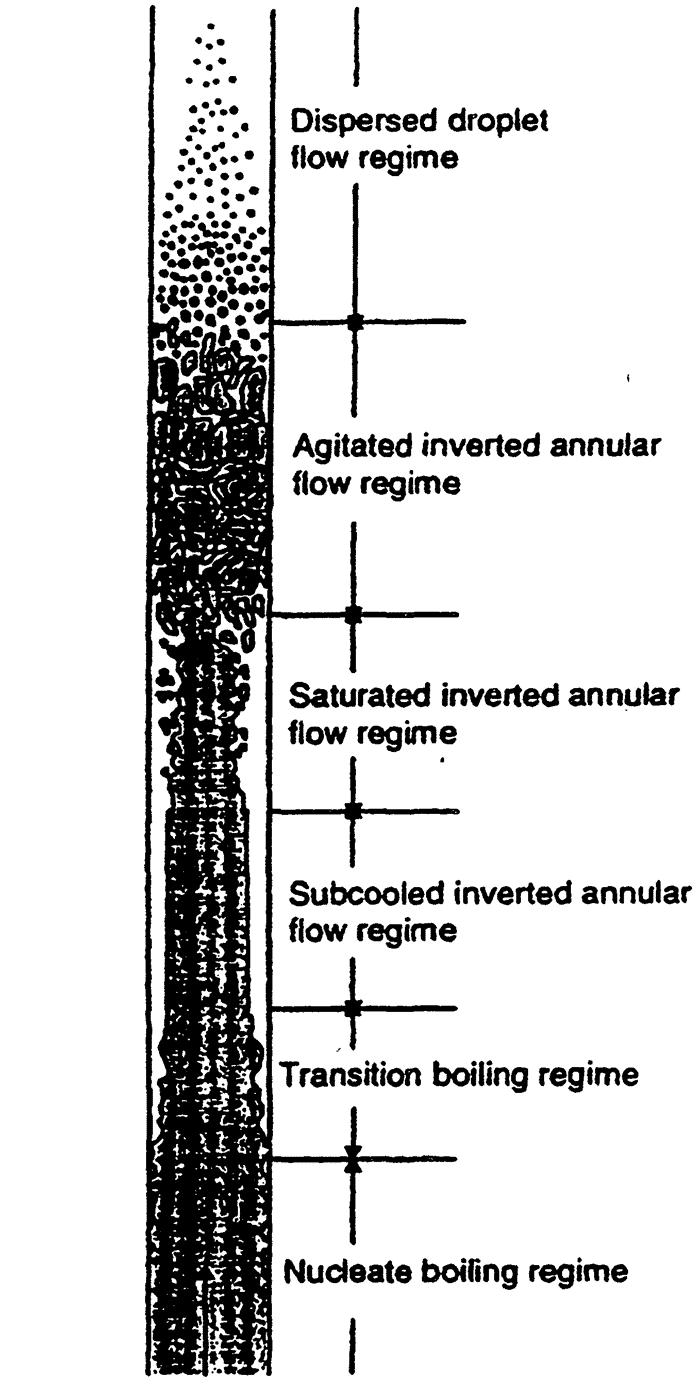Heat Transfer in Areas Where the Critical Heat Flux Has Been Exceeded
2.7 BOILING AND EVAPORATION
2.7.3 Boiling within vertical tubes
2.7.3.5 Heat transfer in areas where the critical heat flux has been exceeded
J. G. Collier and G. F. Hewitt
The critical heat flux condition (shown as a ridge in the three-dimensional representation of the “boiling surface” in Figure 16095.4) represents a situation at which there is a more or less sudden decrease in the value of the heat transfer coefficient by one or two orders of magnitude as compared with the values obtained in the nucleate boiling or two-phase forced convective regions. This decrease is a consequence of the fact that the heat transfer surface is no longer completely wetted by the liquid phase. Vapor now completely or partially blankets the surface, and heat transfer is no longer to a highly conducting liquid but to a poorly conducting gas.
By referring to Figure 16095.4 and Figure 16095.5, it will be noted that such a condition can occur for both the subcooled and saturated liquid states. Four separate areas can be identified, and it is convenient to consider the heat transfer mechanisms in terms of these four regions — transition boiling, subcooled film boiling, saturated film boiling, and the liquid-deficient (postdryout) region — although there would appear to be no well-defined boundaries between the regions. The transition boiling region occupies the reverse slope (partly obscured) in Figure 16095.4, whereas the other regions — subcooled film boiling, saturated film boiling, and the liquid-deficient (postdryout) region all occupy parts of the slope on the other side of the valley representing the minimum heat flux.
The importance of post-CHF heat transfer is deflected in extensive reviews given in review journals and books and the reader is referred to these reviews [which include those of Collier and Thome (1994), Carey (1992), Tong and Tang (1997), Ishii (1992), Katto (1996), Chen and Costigan (1992), Groeneveld (1992) and Andreani and Yadigaroglu (1994)] for further information.
Where CHF occurs in the subcooled region, the sequence of events may be as shown in Figure 1 which is taken from the paper by Hammouda et al. (1996). Hammouda also observed various characteristic dependencies of post-CHF heat transfer coefficient with equilibrium quality. These are illustrated in Figure 2. Hammouda et al. associated region I with subcooled inverted annular flow and region IV with the dispersed droplet regime. When dryout occurs in annular flow, then the sequence of events is different, the system passing immediately to the dispersed droplet flow regime (where the droplet size distribution may be different since the droplets are created by different mechanisms).
... You need a subscriptionOpen in a new tab. to view the full text of the article. If you already have the subscription, please login here
